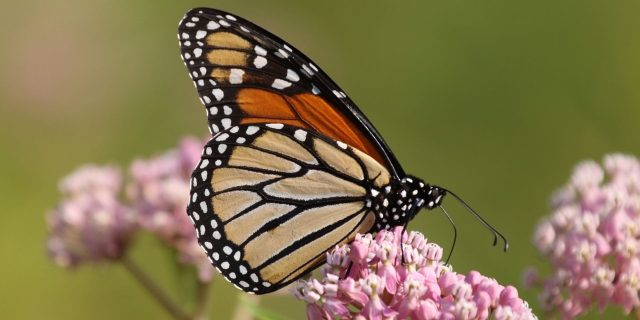27
Jul
Monarchs Listed as Endangered by International Safety Group, while U.S. Fails to Take Meaningful Action

(Beyond Pesticides, July 26, 2022) As monarch butterfly numbers continue to drop throughout the United States, an international conservation group is listing the migratory monarch butterfly as endangered. The move by the International Union for the Conservation of Nature (IUCN) places pressure on the U.S. Fish and Wildlife Service (FWS) to prioritize protections for this rapidly dwindling iconic species. “Today’s Red List update highlights the fragility of nature’s wonders, such as the unique spectacle of monarch butterflies migrating across thousands of kilometres,” said Bruno Oberle, PhD, IUCN Director General. “To preserve the rich diversity of nature we need effective, fairly governed protected and conserved areas, alongside decisive action to tackle climate change and restore ecosystems. In turn, conserving biodiversity supports communities by providing essential services such as food, water and sustainable jobs.”
Migratory monarch butterflies are under threat from a range of factors harming both their western and eastern populations. Logging and deforestation have destroyed much of their overwintering grounds in Mexico and California. Climate change has subjected the butterflies to temperature anomalies and extremes, severe weather, and wildfires. Herbicide use has eliminated millions of acres of breeding habitat by killing off milkweed plants that monarchs require to rear their young. What little milkweed is left has been found to be ubiquitously contaminated with toxic pesticides.
Western monarch populations numbered over 10 million as recently as 1980. Their populations have shrunk by an astounding 99.9%. Imagine only one person out of every 1,000 making it through the last 40 years. One recent count along the California coast recorded only 2,000 butterflies.
A study funded by U.S. Fish and Wildlife Service determined that monarchs have an extinction risk of 86% within the next 50 years. Within only 20 years, the risk is still 72%. “This study doesn’t just show that there are fewer monarchs now than 35 years ago,” said study author Cheryl Schultz, PhD, an associate professor at Washington State University Vancouver. “It also tells us that, if things stay the same, western monarchs probably won’t be around as we know them in another 35 years.”
Eastern monarch populations are in a similarly dire state. This population migrates from the U.S. East and Midwest to overwintering grounds in Mexico each year. After numbering nearly 1 billion butterflies in the 1990s, recent counts place the population at roughly 93 million. A 2018 study published by a research team at University of Florida found that this population has declined by 80% since 2005. Two years after that study was published, the 2019/2020 eastern monarch count conducted by citizen scientists found another 53% reduction. Eastern monarchs are counted by the number of acres they occupy at their overwintering grounds. In 2019/20, this number was 7 acres, down from 15 acres the prior year. Scientists have determined that 15 acres is the minimum threshold necessary to prevent total migratory collapse. A report from the World Wildlife Fund estimates that at the current rate of decline, the eastern monarch migration could collapse within 20 years.
Despite all of these concerning data, U.S. Fish and Wildlife Service has failed to officially place monarchs on the endangered species list. FWS indicates that listing monarchs is “warranted but precluded by higher priority actions…” Government officials say they “will develop a proposed rule to list the monarch butterfly as our priorities allow.” This decision itself comes after five years of waiting on a petition to consider the species for listing.
IUCN’s move is a recognition that more action must be taken to address precipitous monarch declines. FWS is relying upon state, local and non-governmental actions, but a coordinated federal strategy that protects the critical habitat of the monarch butterfly throughout the United States is an urgent requirement. Advocates say that FWS is likely delaying due to the massive changes that will need to be enacted to stop development, logging, and toxic pesticide use within the monarch’s migration pattern. Yet as ICUN’s Director General notes, protecting species like the monarch provides multiple economic benefits. The advantages gained by conserving these iconic species will always be worth the short-term costs and disruptions their protections warrant.
We must stop monarchs from oblivion. Tell US Fish and Wildlife to officially list monarch butterflies as endangered species, so that they have access to additional protections needed to recover the population. As action from the federal government is increasingly unreliable due to the propensity to place short-term economics over long-term environmental and financial benefits, individual, local, and state actions are still critical components in safeguarding the remaining monarch population. See Beyond Pesticides’ BEE protective webpage for steps you can take to safeguard monarch and other dwindling pollinator species.
All unattributed positions and opinions in this piece are those of Beyond Pesticides
Source: IUCN press release, Associated Press











Protect Monarchs by all means necessary NOW
July 27th, 2022 at 8:07 pm